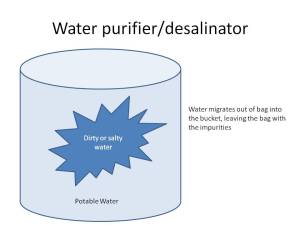I am old enough to have been an engineer when carbon nanotubes were discovered, not that long after buckyballs. I remember the excitement of all the vast potential. It was immediately obvious to very many engineers how they could be used in lots of different ways. Mostly we all came up with the same ideas, but a few were different. My main different contribution was the electron pipe, which allows a billion times as much data transfer as optical fibre.
Graphene is the new wonder material equivalent now. Short diversion: briefly, graphene it is just the latest new arrangement of carbon atoms. So now we have a ball, a tube, and a plane as well as common graphite and diamond. We don’t yet have the carbon cone, the pyramid, the cube. Then think pasta, and all the shapes you get that in, carbon should be able to do all those too. Then think of just about any other pattern in 3D, and you can probably build that out of variants. OK, diversion over.
Graphene Still
Graphene apparently lets water through but not alcohol. So, graphene stills won’t be far away. Refining that idea, all you need is a container with a graphene membrane, i.e. a bag made of graphene, or a porous bag coated with graphene. Water will migrate to one side, leaving concentrated solution of alcohol on the other. Naturally, you’d make the graphene membrane highly convoluted to maximise surface area.
If that works, and graphene also doesn’t allow salt or dirt through, then you could also make a desalinator or water purifier the same way.
Graphene desalinator
I have no idea if this will work, but I bet the guys that invented it know and if it could, they must have it on a very long list of things to do.



